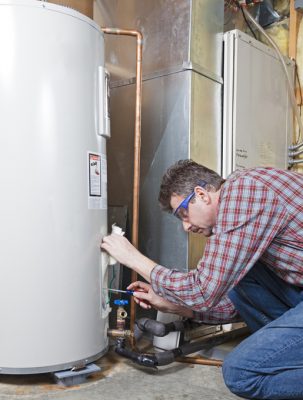Ensuring Longevity of Your Home's Hot Water System: Maintenance TipsHow to Keep Your Home's Hot Water System Functioning Well
Ensuring Longevity of Your Home's Hot Water System: Maintenance TipsHow to Keep Your Home's Hot Water System Functioning Well
Blog Article
The publisher is making several great observations on the subject of Tips on Maintaining a Water Heater in general in this post just below.

Hot water is necessary for everyday convenience, whether it's for a revitalizing shower or cleaning dishes. To ensure your warm water system runs efficiently and lasts longer, regular maintenance is essential. This short article supplies functional pointers and understandings on just how to keep your home's warm water system to avoid disruptions and costly repairs.
Introduction
Maintaining your home's hot water system might seem challenging, but with a few easy steps, you can ensure it operates smoothly for years to come. This guide covers every little thing from recognizing your warm water system to DIY maintenance suggestions and knowing when to hire professional help.
Importance of Keeping Your Warm Water System
Normal upkeep not only prolongs the lifespan of your hot water system but additionally guarantees it runs effectively. Overlooking maintenance can lead to lowered performance, greater energy bills, and also premature failure of the system.
Indicators Your Hot Water System Needs Upkeep
Understanding when your warm water system requires focus can stop major concerns. Keep an eye out for indicators such as inconsistent water temperature, strange sounds from the heating unit, or rusty water.
Purging the Hot Water Heater
Flushing your hot water heater eliminates debris accumulation, improving effectiveness and prolonging its life.
Monitoring and Replacing Anode Rods
Anode poles prevent corrosion inside the container. Checking and replacing them when worn is crucial.
Facility Issues Needing Professional Assistance
Instances include significant leaks, electric problems, or if your hot water heater is continually underperforming.
Routine Specialist Maintenance Benefits
Expert upkeep can include detailed evaluations, tune-ups, and making sure compliance with security criteria.
Inspecting and Changing Temperature Level Settings
Changing the temperature level settings makes sure optimum performance and security.
Do It Yourself Tips for Upkeep
You can perform a number of upkeep jobs yourself to keep your warm water system in leading condition.
Checking for Leakages
Regularly examine pipelines and links for leaks, as these can result in water damages and greater costs.
Understanding Your Hot Water System
Prior to diving into upkeep tasks, it's handy to understand the standard components of your warm water system. Generally, this consists of the water heater itself, pipelines, anode rods, and temperature level controls.
Monthly Upkeep Tasks
Regular regular monthly checks can help capture small problems prior to they intensify.
Examining Pressure Alleviation Valves
Evaluating the stress relief valve guarantees it works correctly and stops too much pressure build-up.
Insulating Pipelines
Insulating hot water pipelines minimizes heat loss and can save power.
When to Call a Professional
While do it yourself upkeep is useful, some concerns require expert know-how.
Final thought
Routine upkeep of your home's hot water system is vital for effectiveness, durability, and expense savings. By complying with these suggestions and knowing when to seek professional help, you can ensure a reliable supply of warm water without unanticipated interruptions.
How to Maintain an Instant Hot Water Heater
Before tinkering with your hot water heater, make sure that it’s not powered on. You also have to turn off the main circuit breaker and shut off the main gas line to prevent accidents. Also turn off the water valves connected to your unit to prevent water from flowing into and out of the appliance. 2. When you’re done, you have to detach the purge valves’ caps. These look like the letter “T” and are situated on either side of the water valves. Doing so will release any pressure that has accumulated inside the valves while at the same time avoid hot water from shooting out and burning your skin. 3. When the purge valves’ caps are removed, you have to connect your hosing lines to the valves. Your unit should have come with three hoses but if it didn’t, you can purchase these things from any hardware or home repair shops. You can also get them from retail stores that sell water heating systems. Read the user’s manual and follow it to complete this task properly. When the hosing lines are connected, open the purge port’s valves. 4. You should never use harsh chemical cleaners or solutions when cleaning your unit. Make use of white vinegar instead. It should be undiluted and you’ll probably use about 2 gallons. 5. Now flush your water heater. This task should probably take about 40 minutes. We can’t give you specific directions for this because the procedure is carried out depending on the type, model and brand of your heater. With that being said, refer to the user’s manual. 6. When you’re done draining the unit, you have to turn off the purge port valves again. Remove the hosing lines that you earlier installed on each of the water valves. Put the valve caps (purge port) back in their respective places and be very careful so as not to damage the rubber discs that are found inside these caps. 7. Now that everything’s back in place, check your user’s manual again to find out how to reactivate your water heating system. 8. Once it is working, turn one of your hot water faucets on just to let air pass through the heater’s water supply pipes. Leave the tap on until water flows smoothly out of it. https://www.orrplumbing.com/blog/2014/september/how-to-maintain-an-instant-hot-water-heater/

We had been shown that report about What Kind of Maintenance Do Water Heaters Need? through a friend on a different blog. Make sure you take the time to share this article if you liked it. Thanks a lot for your time spent reading it.
This Site Report this page